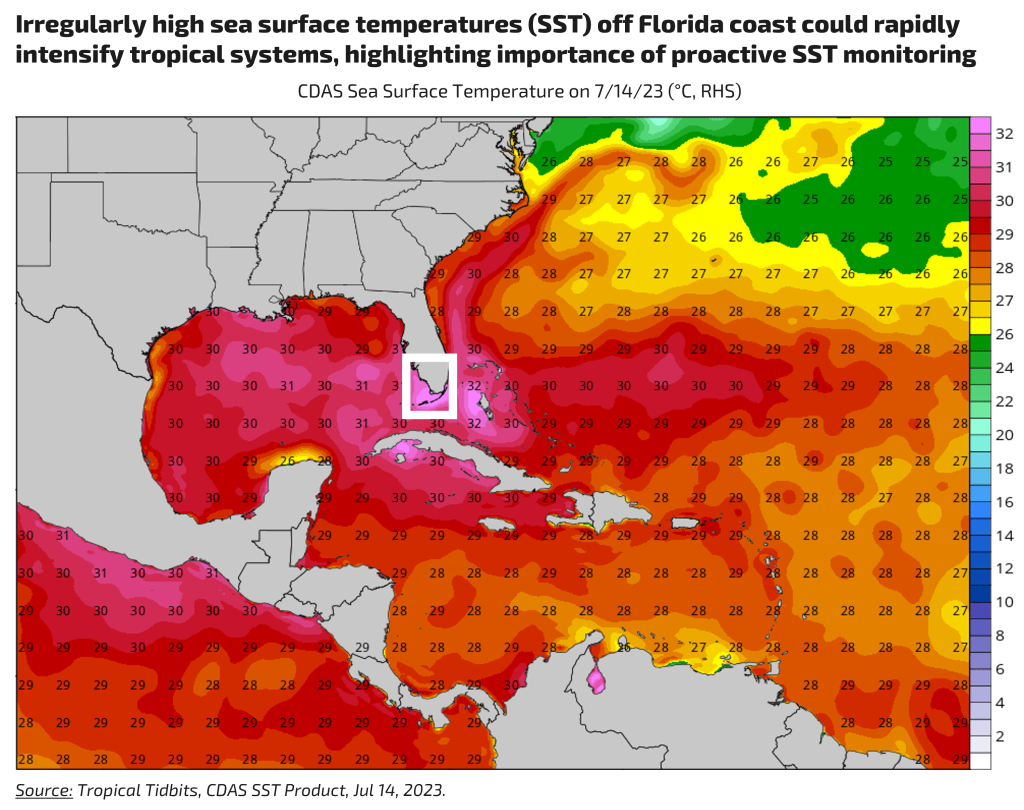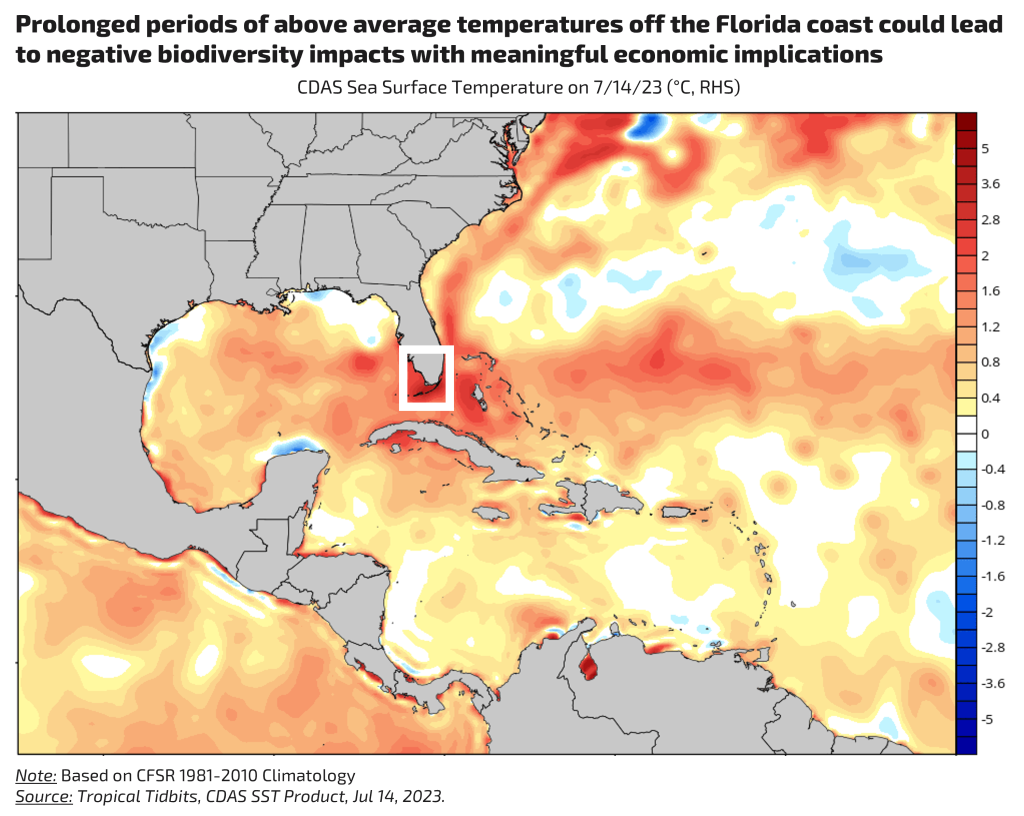Much of the southwestern United States is experiencing sweltering temperatures this week. According to the National Weather Service (NWS), an excessive heat warning was in effect for many counties located in California, Nevada, Arizona, and Texas on the 13th of July. This type of warning has severe impacts on human health, and precautions need to be taken before going outside.
The other side of the United States isn’t a stranger to this heat wave either, but the impacts are coming in a different way. Off the western coast of Florida, sea surface temperatures (SST) have soared into the 90s. An average SST of around 90°F isn’t too uncommon in Florida during the months of August and September. However, the temps that are occurring now in the month of July are abnormally high, and they may have detrimental impacts on the environment. The below map from Tropical Tidbits shows the distribution of temperatures across the western Atlantic on the 14th of July. The area of interest is within the white box where SST is 90°F or greater.
 The next chart shows the SST anomaly for the same area. The anomaly is based on how different an area’s temperature is compared to an average based on the years 1981-2010. Deeper reds are pictured in the same area of interest (within the white box), which confirms that 90°F waters are much warmer than they should be compared to long-term averages. There are a few negative impacts that arise because of the observed anomaly.
The next chart shows the SST anomaly for the same area. The anomaly is based on how different an area’s temperature is compared to an average based on the years 1981-2010. Deeper reds are pictured in the same area of interest (within the white box), which confirms that 90°F waters are much warmer than they should be compared to long-term averages. There are a few negative impacts that arise because of the observed anomaly.

One of the major concerns with this extreme event pertains to coral bleaching. The already struggling coral in this region is not resilient enough to deal with the 90°F SST so early on during the summer. The prolonged exposure to heat may lead to a massive bleaching event. Although corals can recover from mild bleaching, it is likely they will not survive if the event becomes severe. Resulting coral losses will pose a serious threat to marine biodiversity.
The extreme temperature surge may also have a lasting impact on the rest of the hurricane season. The 2023 Atlantic hurricane season has been quiet so far, but according to the hurricane research team at Colorado State University, the entire season is expected to have an above average number of storms. Therefore, the heart of the hurricane season (beginning in mid-August and ending in mid-October) could be rather busy in the Atlantic basin. The extreme SST may have an impact on hurricane intensification. According to the NWS, SST needs to be at least 79° in order to support a hurricane. The warmer the temperatures get, the more likely a hurricane can undergo intensification (as long as other factors such as ocean heat content, wind shear, and salinity remain favorable). As the summer progresses, it will be important to see if this event will act as a precursor to any rapid tropical intensification.
It is essential to remember that extreme events such as this one will become more common as the earth continues to warm. In order to mitigate the effects, an accurate inventory and reduction of our fossil fuel usage need to be implemented. The premier way of obtaining validated measurements of greenhouse gases is by using Floodlight’s, SAGE. With SAGE, scope 1 and 2 can be directly measured for any asset, anywhere in the world. SAGE utilizes geospatial technology to get the job done. Not only is this methodology faster than current industry standards, but it is more scientifically sound as well, allowing those who use the product to feel confident in figuring out where they are so they may develop a reduction plan. In an effort to protect ourselves against climate change, we need scientific answers, and Floodlight aims to deliver them.

